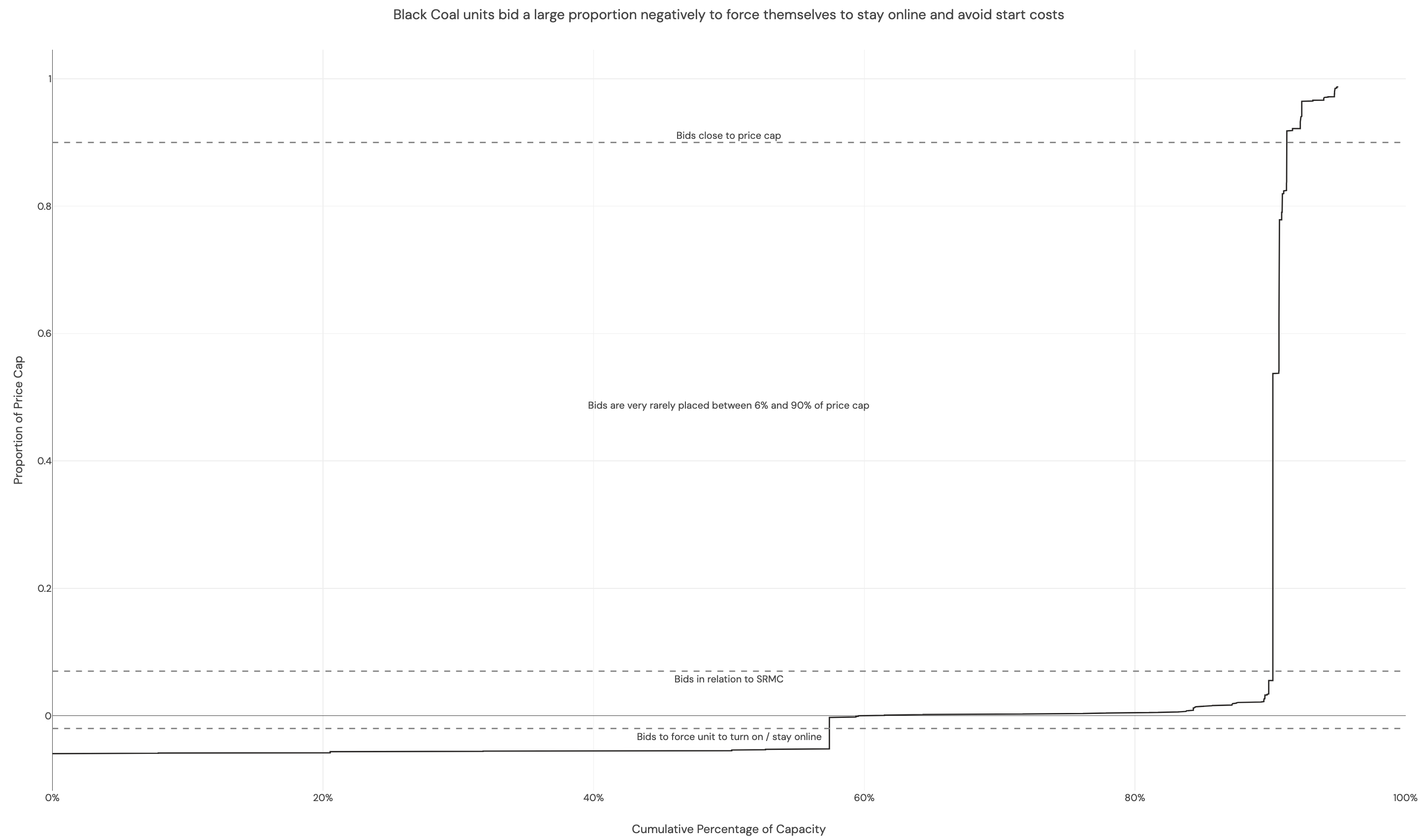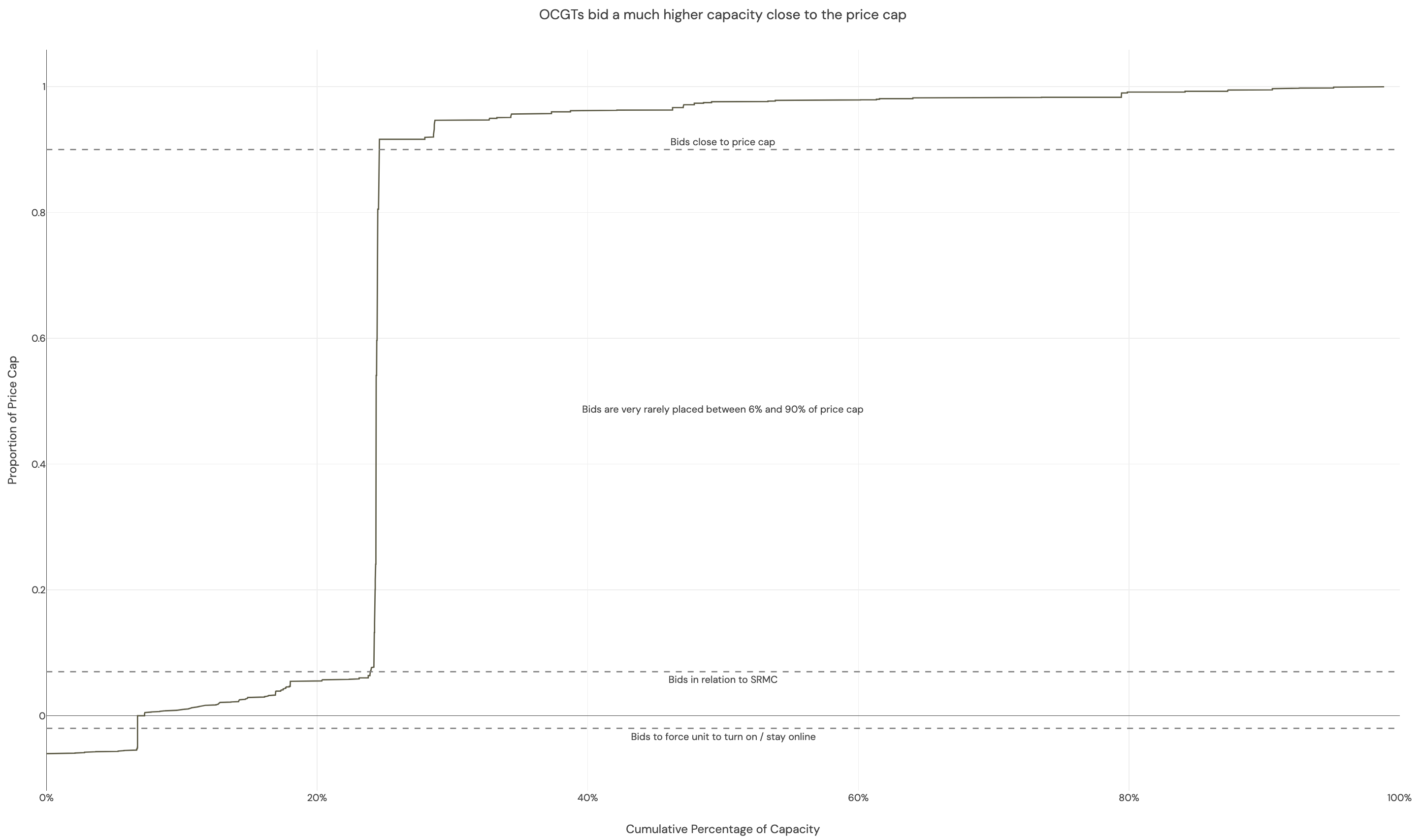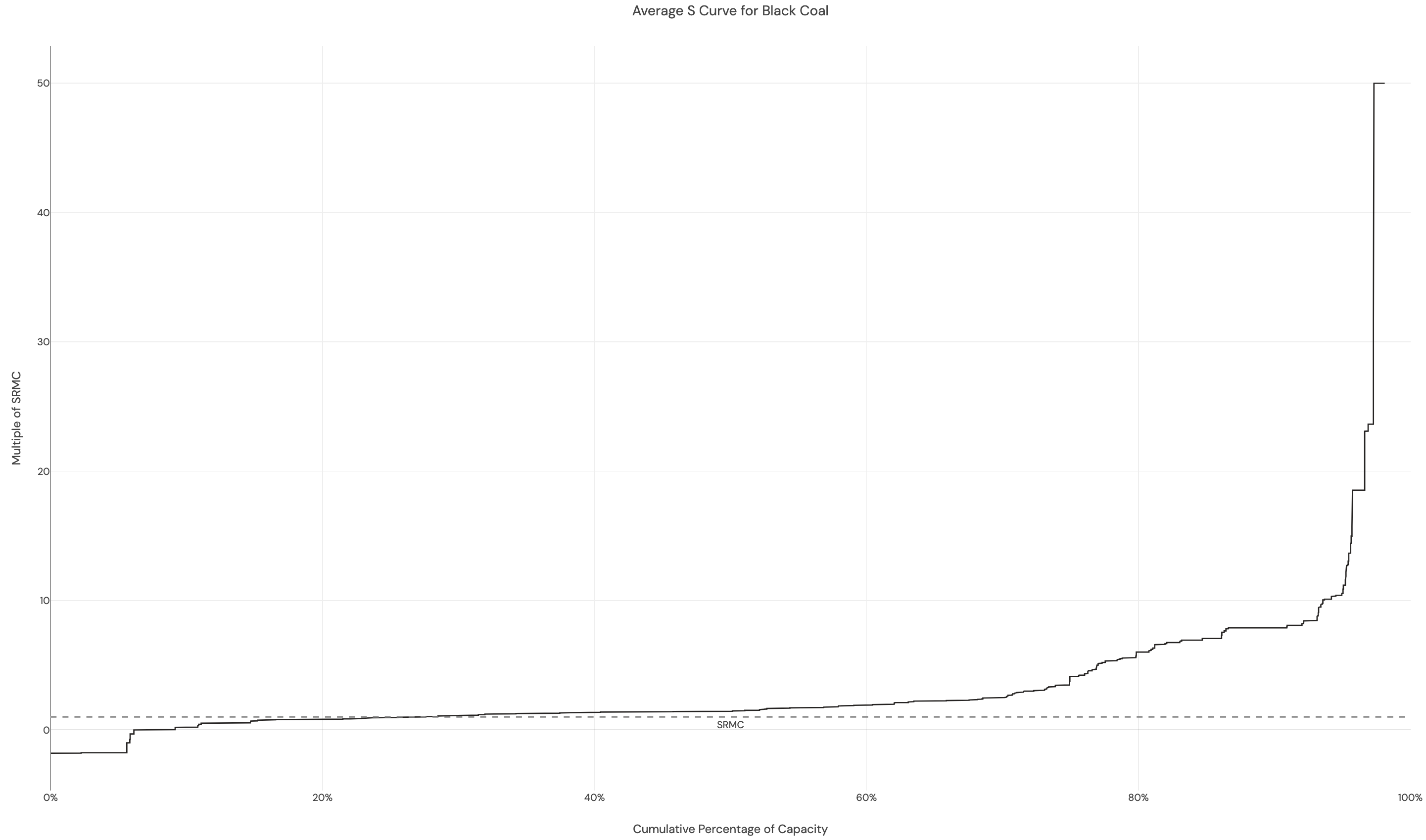Thermal Generation
How we model the varied bidding behaviour of thermal generation
Cost of generation
The bidding behaviour of thermal generation is complex and has a big impact on price shape as well as volatility. We model thermal generation by first calculating their short-run marginal cost (SRMC), i.e. what it costs each unit to generate. These SRMCs are calculated by multiplying each plant’s heat rate (a measure of thermal efficiency, typically in GJ/MWh) by their fuel price. We then add any additional variable maintenance costs to capture the full cost of generation per MWh.
Adjustment for MLFs
In the NEM, while generators bid based on their SRMC, the NEM dispatch engine (NEMDE) accounts for network losses through Marginal Loss Factors (MLFs). Rather than adjusting the bid bands upon bidding in on the generator’s side, the NEM’s dispatch algorithm divides each generator’s bid price by its MLF to determine an effective cost at the Regional Reference Node (RRN). This means that, all else being equal, generators with lower MLFs (i.e., located further from the load or subject to higher losses) are less competitive in the dispatch process.
To reflect this behaviour, the model approximates the impact of MLFs by dividing each generator’s calculated SRMC by its MLF. This increases the apparent cost of generation for units with lower MLFs, ensuring that the model prioritises generation in locations with lower transmission losses - mirroring how NEMDE accounts for locational efficiency.
Representation of varied bidding behaviour
Although the SRMC of a unit gives a good estimate of roughly what that unit should bid, generators have varied bidding strategies in order to account for other factors such as ramp costs and start costs, minimum stable levels, profit maximisation of the unit, or profit maximisation of a wider generation portfolio. To capture this varied bidding behaviour, we have analysed historical bidding of each unit in relation to their short-run marginal cost. Bids can in general be split into three categories:
- Price Floor Bids: Bids that are below $-100/MWh to ensure that a unit will definitely generate at above a certain level - this is usually when units have a minimum stable level that they cannot safely generate below.
- SRMC Bids: Bids that are simply a multiple of a unit's short-run marginal cost.
- Price Cap Bids: Bids that are placed close to the price cap, usually above 90% of the price cap. This can be for various reasons but is often simply for profit maximisation when system margin is tight and the amount of available generation is low. This is also common for duration-limited units that bid based on opportunity cost, such as reservoir hydro, pumped hydro, and battery storage. Bidding high when they are anticipating a price spike allows them to make sure that they don't generate too early and deplete their state of charge before a price spike.
Our model distinguishes between these three bid types and models them each separately. We do this by taking the historical bidding behaviour of each individual unit, and splitting their bids into bids below $-100/MWh, bids above 6% of the price cap, and bids in between. The graphs below demonstrate that these are three very distinct types of bid, with very little overlap.


These three distinct bid types are modelled as follows:
- Price Floor Bids: If a unit is determined to be 'online' by the unit commitment model, then it must bid it's Minimum Stable Level negatively (close to the price floor) so that the unit definitely generates above that level.
- Price Cap Bids: The proportion of each unit that bids close to the price cap is difficult to get right, and has a significant impact on how often price spikes occur. We can't simply use the proportion of the time that each unit bids close to the price cap as sometimes they bid close to the price cap for other reasons, such as because they don't expect prices to get high enough for it to be worth them generating. Often we see that as system margin gets tighter, units actually start bidding more capacity closer to their SRMC, as generators still don't expect prices to get close to the price cap but do expect prices to at least exceed their SRMC. We have instead carefully tuned the proportion of generators that bid close to the price cap with extensive backtesting.
- SRMC Bids: The remaining proportion of each unit bids in relation to it's short-run marginal cost, and this is again based on historical bidding behaviour. As shown above, we have isolated the bids from each unit that are not negative or close to the price cap, leaving only bids close to each units SRMC. We have then looked historically at how these bids are distributed as a proportion of their SRMC, and we then apply this distribution to the future SRMC of each unit for any given time in the future - we call this distribution an S curve. These S curves differ by unit, but below you can see the average bidding behaviour of black coal units.

Updated 3 months ago
